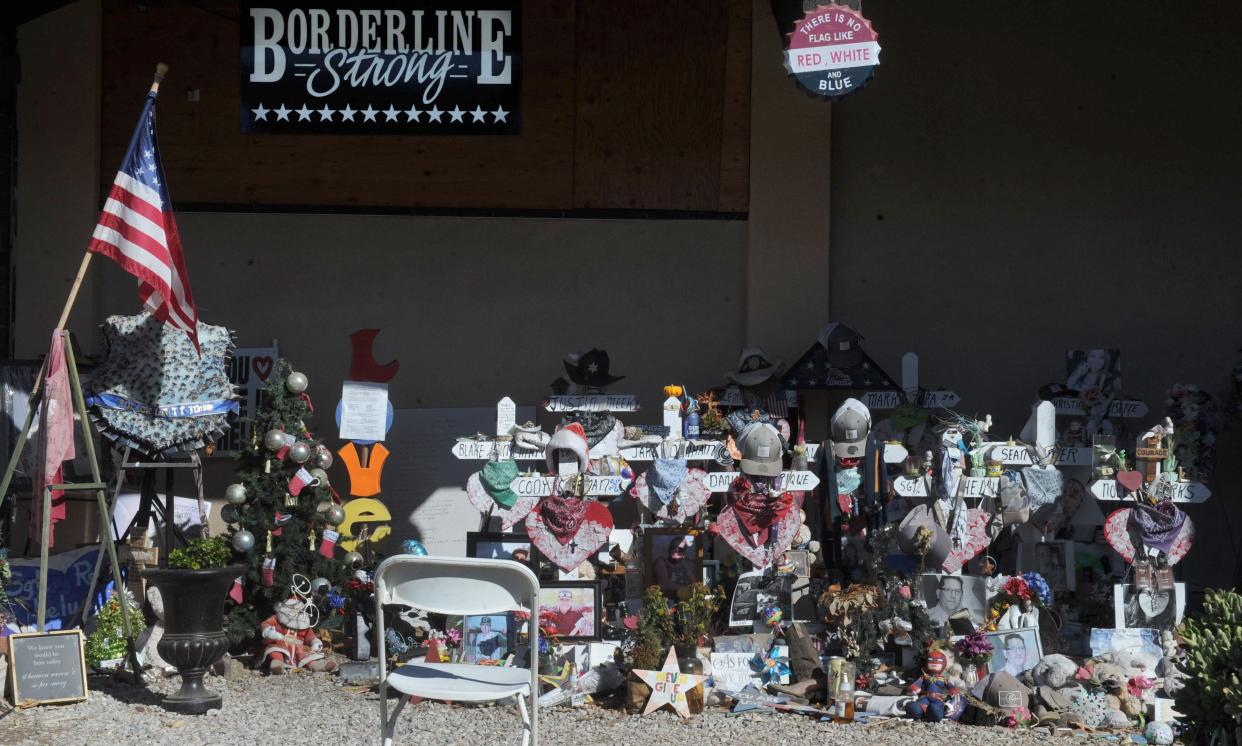Autopsy reports for Borderline mass shooting victims released after yearslong court fight

Editor's note: The time when the victims were declared dead has been corrected in this story.
The autopsy reports for the 11 civilian victims of the mass shooting at the Borderline Bar & Grill five years ago were released Tuesday, ending a yearslong court fight by media organizations, including The Star, to obtain them.
The reports provide details on the wounds gunman Ian David Long inflicted on Nov. 7, 2018, and the efforts the victims made to flee. With the exception of a 48-year-old security guard, the customers and workers killed that night were all young adults ages 18 to 33.
The Star, the Los Angeles Times and the Associated Press requested the reports shortly after the mass shooting at the bar in Thousand Oaks to shed light on what happened and why.
But they provide no definitive answer to the question of whether anyone could have been saved with an immediate medical response to the establishment off Moorpark Road.
Almost all the times of death are reported as 12:20 a.m. the next morning, which refers to the time they were declared dead and not the actual times of death. The lone exception was 18-year-old Alaina Housley. The college student's time of death was stated as unknown.
"There is not a way to sort out the minutes, seconds in these types of cases," the county's chief medical examiner, Dr. Christopher Young, said in an interview Tuesday.
County officials have long discounted the possibility that any of the victims could have survived the shooting and Young did again on Tuesday.
He said he did not believe the wounds were survivable even if the victims had been shot in a hospital near an emergency room.
The gunman shot the victims in vital areas that would cause death, Young said.
The Medical Examiner's Office released the reports after the families of the civilian victims lost their final court battle late last month to keep the autopsy records private.
That's when the California Supreme Court disclosed that it would not take up the case after the 2nd District Court of Appeal supported public access in a unanimous opinion in June. The appellate court ruled that privacy rights may properly factor into county officials' decision to withhold the records in whole or in part, but "do not nullify" rights to public access enshrined in the state Constitution and the California Public Records Act.
The act requires disclosure of government documents unless they are explicitly exempted, a privilege that generally has not applied to autopsy records.
Media attorney Kelly Aviles said last month the high court's decision means what her clients have been arguing all along: that the families have no legal basis to stop Ventura County officials from disclosing the reports.
Young said Tuesday the records were not released previously because a court order was still in effect preventing their release.
Ventura County Sheriff's Sgt. Ron Helus, 54, was also killed as he tried to stop the violence. Ventura County released autopsy reports for Helus and the gunman in late 2020. Long shot himself, while Helus was felled when a highway patrolman who went inside the bar to save lives shot Helus by mistake. There was no court fight to prevent the release of those autopsy reports as there was with the civilian victims.
New details about Borderline Bar & Grill mass shooting
The reports show where at the bar the victims were killed. Sean Adler, Telemachus Orfanos, Cody Gifford-Coffman and Kristina Morisette were found near the entrance where Long first started shooting after entering the bar at 11:18 p.m.
Housley was found in an entry hall by a restroom, while Blake Dingman, Jacob Dunham and Mark Meza were found inside the bathrooms. Daniel Manrique tried to flee by jumping through a window and was found dead on the ground outside the club.
Justin Meek was found by the dance floor and Noel Sparks in an area reserved for employees behind the main bar.
Brittney Barsotti, general counsel for the California News Publishers Association, said the CNPA fought to have these records released, and to defeat a bill by Assemblymember Jacqui Irwin, D-Thousand Oaks, that would have allowed autopsy and death investigations to remain sealed at the request of family members in certain cases. That bill was introduced in 2021 and passed in the Assembly but never made it to a vote in the Senate.
“Access to these types of records is important for journalistic purposes,” Barsotti said. “Unfortunately, mass shootings continue to go on and are a matter of public concern, and learning from these types of incidents to help increase public safety is important.”
For example, Barsotti said, autopsy records can help the public understand how law enforcement responded to a shooting, what officers did right and what they could have done better. They can also help dispel rumors, such as when “Glee” actress Naya Rivera drowned at Lake Piru and medical examiner’s records showed that she was not under the influence, as some people had assumed.
Staff Writer Tony Biasotti contributed to this report.
Kathleen Wilson covers courts, crime and local government issues. Reach her at kathleen.wilson@vcstar.com or 805-437-0271.
This article originally appeared on Ventura County Star: Autopsy reports released in Ian Long mass shooting at Borderline

